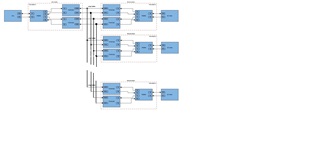Other Parts Discussed in Thread: TIDA-060013, , TCA9800, TCA9517
Hi Suppot Team,
I have got helps from TI;s support team at 'logic forum" regarding P82B96's VOL issues. Many thanks for this. After a few readings we decided to go for "differential transmission" of the I2C signals, which is almost the same as your reference design "TIDA-060013, I2C Range Extension", but just with multiple-point slaves.

Now my questions are: 1. in the diagram TIDA-060013 as above: is it OK to replace P82B96 with TCA9800, or TCA9517? Since the long wire is handles by CAN differential transceiver not P82B96, and we need the VOL (Sx/Sy) facing to SALVE's I2C port to be lower than or equal to 0.4V. We do not see why needs P82B96 here. Please advise.
2 We assume "mutli-point configuration is allowed", and with termiantion resistors at cable's two-ends, correct?

Thank you very mcuh!
Tom



